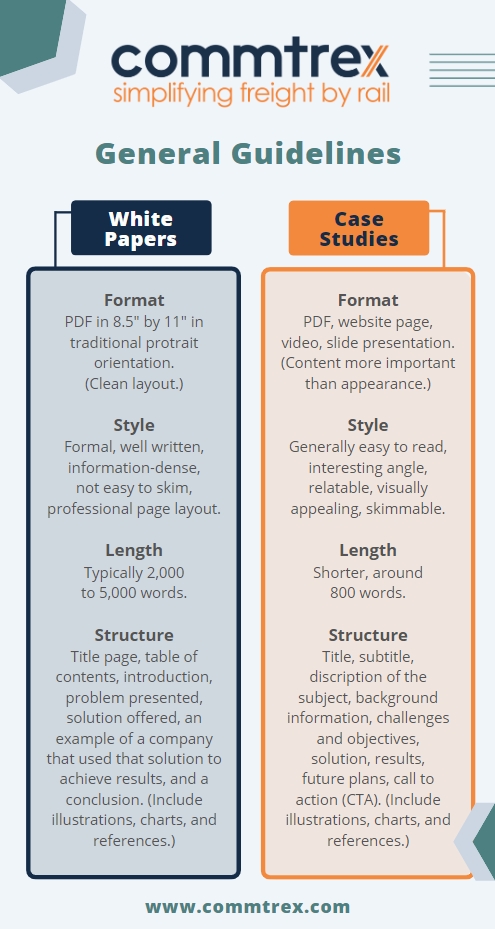White papers and case studies are both highly effective content marketing tools that demonstrate thought leadership in an area of expertise. But in order to create and use them successfully, it is important to understand their differences:
White papers provide benefits and rationale for the implementation of a proposed solution.
Case studies provide actual examples for how a solution has fixed a problem.
With either marketing solution, the care you put into creating your document is just as important as the way you use it. Knowing which one to use and why is crucial to effectively promote your business.
White Papers
Since white papers present a problem and a solution, they can be used by marketers as advanced problem-solving guides. The goal of a white paper is similar to general marketing content: to educate and inform. It builds credibility and trust while serving as a tool to demonstrate the value of your product or service. A white paper allows you to capture leads, track visitors, and collect data.
Case Studies
Case studies give your audience more information about your product or service in the context of specific ways your company has historically solved problems. They tell the story of successful business partnerships between vendors and clients. A variety of case studies created around various aspects of your business can help your sales team convert leads into customers and upsell existing customers.
What are some general guidelines that are important to follow when creating your white paper or case study?


